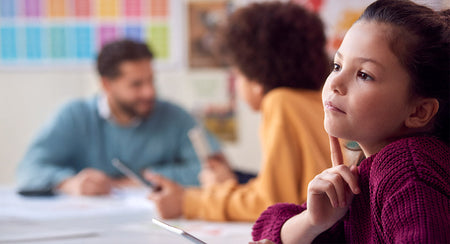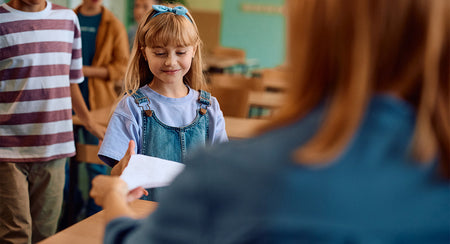A Six-Part Lesson Design that Accelerates Learning
The workshop model of lesson construction is designed to focus student attention and activities on building understanding, developing ownership, and fostering independence. It also offers the advantage of application across disciplines and subject areas and has been proven to be successful when put into practice.
While there are variations in the ways workshop activities are labeled and described, they share core elements that help to accelerate, solidify, and extend learning. The following are six learning and teaching components common to widely accepted workshop approaches, and a description of how each component accelerates the learning process.
Component #1: Prepare students with engaging opening activities. We might start with a compelling narrative that reveals the relevance and importance of what students will be learning. The activity might reveal and reinforce connections to prior learning. It could be a challenge activity that invites students to solve a problem or find an answer that will be revealed in the upcoming lesson. This activity also might be a pre-assessment task that reveals what students need to review or may still need to learn.
Accelerator: Preparation activities activate thinking and help students get ready to learn.
Component #2: Present brief, focused, relevant mini lessons. Lessons that generate the greatest amount of learning are not long. In fact, maximum attention and information absorption typically extend only for about 10-20 minutes depending on the age and maturity of students, the complexity of the content, and the compelling nature of what students will learn. While we might be tempted to extend our explanation, provide greater detail, or delve into specifics, research shows that students’ attention will begin to wane when the information we share extends beyond this relatively short time span. The key is to discern what is most important for students to learn next, organize the content in the most understandable and manageable format, and present the information with energy, commitment, and authenticity. Mini lessons do not have to be provided through direct instruction. Flexible strategies and variations can be employed to expose students to new learning content.
Accelerator: Short, targeted instruction taps into students’ energy and attention while they are at their peak.
Component #3: Provide opportunities for reflection. When the lesson is finished, students need time to absorb and make sense of what they have heard, seen, and experienced. Often called “brain breaks,” these are important opportunities for students to place what they are learning in working memory where it is sorted and prioritized for storage in long-term memory. We might have students physically move, engage in a mindfulness activity, or another activity that does not require significant mental energy. As little as 3-5 minutes can be adequate to accomplish this goal.
Accelerator: Students’ brains immediately begin to organize and store new information in working memory.
Component #4: Design opportunities for students to interact with what they are learning. Activities such as peer teaching, think-pair-share, and drawing pictural representations and mind maps help students to process new information, strengthen their grasp of information, and articulate their understanding of what they are learning. Students may work alone, in pairs, small groups, or large groups, depending on the content and activity.
Accelerator: Students practice sorting new information, clearing up areas of confusion or misunderstanding, and readying new learning for long-term memory.
Component #5: Arrange for application of new information or skills. Using new skills and applying new understanding to relevant, purposeful, and challenging activities further solidifies learning and builds confidence in using new knowledge. Practice activities also provide additional opportunities to clear up remaining confusion and dispel any misconceptions.
Accelerator: The shift to application and practice completes the transition from learning dependence to independence.
Component #6: Debrief for clarity and understanding. As a concluding activity, debriefing provides an opportunity for students to reflect on their learning. Reviewing strategies, noting areas of struggle, and owning progress and new understanding helps to complete the learning process and move new information toward long-term memory. This can also be an opportunity to identify areas or elements of learning that still need support and review in the future.
Accelerator: Debriefing helps students to understand their learning journey, develop ownership of what they have learned, and provide us with feedback to use as we plan future instruction.
The workshop approach also offers the flexibility to be compressed or expanded depending on the content, amount of time available, and student readiness. Some components might be introduced one day and followed by remaining components the next day. Or, if time allows, the entire process can be accomplished in a single session.
Think about how you already employ elements of the workshop model. Are there areas or aspects you might strengthen or add? How might you adjust your approach depending on the content you teach, the age and maturity of your students, and schedule constraints you face?















